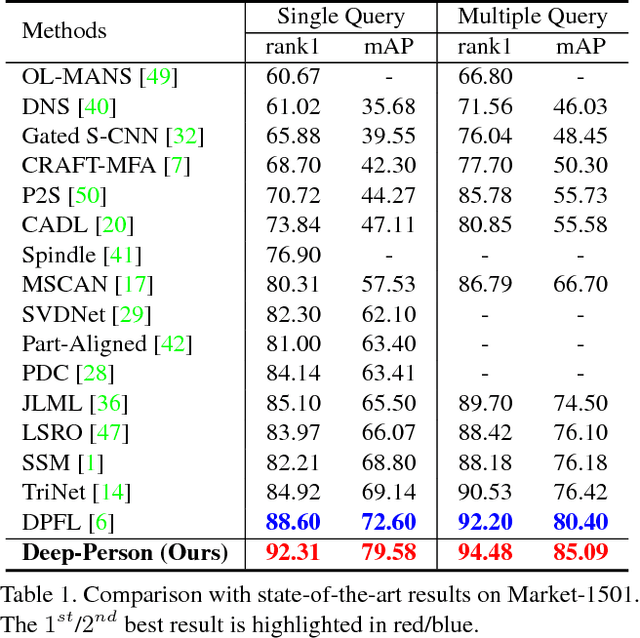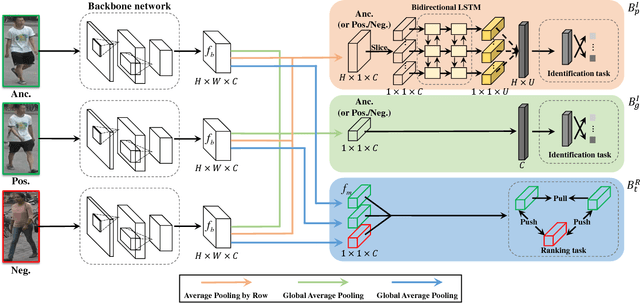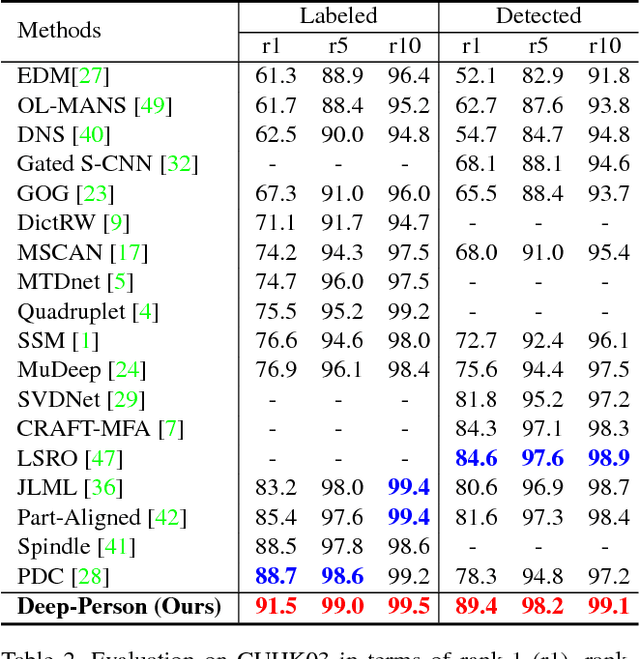Deep-Person: Learning Discriminative Deep Features for Person Re-Identification
Paper and Code
Jul 24, 2018



Recently, many methods of person re-identification (Re-ID) rely on part-based feature representation to learn a discriminative pedestrian descriptor. However, the spatial context between these parts is ignored for the independent extractor to each separate part. In this paper, we propose to apply Long Short-Term Memory (LSTM) in an end-to-end way to model the pedestrian, seen as a sequence of body parts from head to foot. Integrating the contextual information strengthens the discriminative ability of local representation. We also leverage the complementary information between local and global feature. Furthermore, we integrate both identification task and ranking task in one network, where a discriminative embedding and a similarity measurement are learned concurrently. This results in a novel three-branch framework named Deep-Person, which learns highly discriminative features for person Re-ID. Experimental results demonstrate that Deep-Person outperforms the state-of-the-art methods by a large margin on three challenging datasets including Market-1501, CUHK03, and DukeMTMC-reID. Specifically, combining with a re-ranking approach, we achieve a 90.84% mAP on Market-1501 under single query setting.
 Add to Chrome
Add to Chrome Add to Firefox
Add to Firefox Add to Edge
Add to Edge